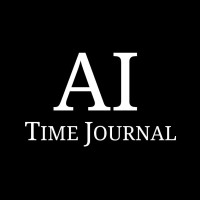Introduction
Plagiarism is a serious problem that has plagued academia since its inception. In recent years, the prevalence of plagiarism has increased due to the increased accessibility of texts on the internet. The consequences of this phenomenon are dire: students lose their degrees and careers, institutions suffer reputation damage and many other victims suffer because they have been duped by plagiarists.
It’s clear that we need a better way to detect plagiarized text – one that can automatically detect students’ errors but also be fast enough for large amounts of data so it doesn’t overwhelm researchers or teachers with false positives. Luckily, Machine Learning (ML) provides us with an answer: using Deep Neural Networks (DNNs) to check for similarities between documents!
The Plagiarism Checker
The Plagiarism Checker is a software tool that can be used to check the originality of the text. It can be used to check texts written by students, professionals, and non-native speakers of English.
The paper scanner for plagiarism works by comparing your document against millions of web pages across the internet in order to determine whether any fragments appear elsewhere on the web without being attributed or cited properly. If you’ve ever had an essay marked down because it contained too many quotes from other people’s work without proper citations for those quotes (i.e., “paraphrasing”), then this program will help prevent such incidents in future projects!
How Does it Work?
To identify plagiarized text, the plagiarism checker uses machine learning to compare new texts with previously checked ones. It does this by comparing phrases and sentences in the new document against those of other documents in its database. This process is called natural language processing (NLP).
If a phrase or sentence matches one found in another document, it’s flagged as potentially plagiarized content and flagged again if there are multiple matches to different parts of the same document.
When a document is flagged as plagiarized, the software provides a list of potential sources it found the text in. You can then decide whether or not to keep that content as part of your essay and make any necessary changes.
Other Use Cases of AI in Checking Plagiarized Text
Artificial Intelligence has become a buzzword in the world of education as well as in business. AI is already being used to check plagiarized text, and it is expected that this practice will continue growing. The use of Artificial Intelligence in checking plagiarized text is a useful tool for students who need help with their writing and do not have enough time to do it themselves.
The main advantage of using this technology is that it can be used by students at any time, regardless of their location or the time of day. In addition, there are no limits on how much information can be checked at once because there are no limitations on how many times a student can make changes or corrections.
AI can be also used to check plagiarized text in many different ways. For example, AI can be used to check for plagiarism in a variety of languages and formats. Additionally, it may be possible to apply the same technology that detects plagiarism on paper documents to other media such as audio or video recordings.
Additionally, it might even be possible for an AI-powered tool to analyze how well the student understands the material being studied before they submit their assignment and then flag any instances where there’s an obvious lack of understanding (i.e., “this sentence doesn’t make sense”).
Machine Learning is Helping us to Check and Prevent Plagiarism in Texts
Machine learning is a powerful tool that can be used to solve many problems. It’s not just for checking the plagiarized texts of students, but also for detecting fraud in financial transactions and helping doctors find the best treatment for their patients.
Machine learning is used in many different industries: education, healthcare, law, and finance. In retail, it helps companies discover new customers or products by analyzing large amounts of data collected from customer interactions with their website or mobile app (product reviews).
In the past years, machine learning has transformed our lives. It’s being used in a variety of industries and applications, from financial services to healthcare and retail.
But what is machine learning? In short, it’s a form of artificial intelligence (AI) that allows computers to learn without being explicitly programmed.
Conclusion
The role of AI in checking plagiarized text is an important one. It can help prevent students from cheating on their essays and exams, and it can also help teachers make sure that the work they assign students has been done correctly.
As we’ve seen, there are many different types of software used for this purpose some are better than others at detecting plagiarism but all have benefits over manual checking methods like checking each word individually or using a checker that only checks for matching phrases without considering context clues.
